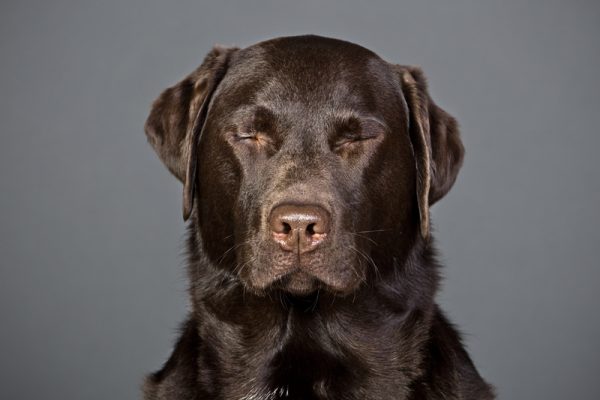
This post is a friendly collision of information about a rare human eye color, online “facts” about dog breeds, and breed standards. It will also be an “interactive” post because we’d like your expertise input at the end.
We launch with an interesting human factoid: Only 2% of the world’s population (fewer than one out of ten Americans) makes green is the rarest eye color in the world, this according to the American Academy of Ophthalmology. A blue-eyed redhead is the rarest eye/hair color combination, but green-eyed redheads are right up there.
For science geeks, it is the OCA2 gene that determines how much melanin is in a human’s iris because it controls how much P protein is produced; the gene, HERC2, controls how the OCA2 gene works which by turning P protein production on and off. If someone has two functional copies of OCA2, that person is more likely to be on the spectrum of blue-green-hazel brown eyes.
As for dogs, most puppies are born with be eyes because melanin production doesn’t begin until they are several weeks old, their adult eye color dependent upon the dog’s genes. Eumelanin pigment usually makes a dog’s eyes a various shade of brown, while amber is the next most common eye color in dogs, and that color can vary from light brown to yellow, yellow-green or grey.
If that was all there was to it, all dogs would have brown eyes, but it’s not. Other genes can modify or dilute the eumelanin and create other eye colors. The Merle gene, for instance, can turn a brown eye color to green.
But not all dogs have the merle gene, and this is where online dog “experts” collide with actual breed standards. We use one source as an example, but sadly, there are others. The downside is that these sites can persuade a novice puppy buyer to insist on a puppy with green eyes in a breed where it isn’t correct. This particular site writes that there are sixteen breeds that have green eyes (their words). The breeds are:
1. Border Collie
2. Weimaraner
3. Pomeranian
4. Siberian Husky
5. Pomsky (not a purebred breed)
6. Schnauzer
7. Louisiana Catahoula
8. Australian Shepherd
9. Dachshund
10. Great Dane
11. Welsh Corgi
12. Chihuahua
13. Cocker Spaniel
14. Labrador Retriever
15. Boston Terrier
16. American Pitbull Terrier
Number 5 alone should be a red flag that the author of the information doesn’t know much about purebred dogs, but let’s look at some of the actual breeds mentioned.
Number 14 on the list is the Labrador Retriever, but its AKC breed standard writes: Eye color should be brown in black and yellow Labradors, and brown or hazel in chocolates. Black, or yellow eyes give a harsh expression and are undesirable.
The AKC breed standard of the Dachshund (#9) writes: “The eyes are of medium size, almond-shaped and dark-rimmed, with an energetic, pleasant expression; not piercing; very dark in color.” No mention of green.
Nor are green eyes mentioned in #15 the Boston Terrier. From the AKC standard: The eyes are wide apart, large and round and dark in color. No green.
Where we did find some “wiggle room” is in the Australian Shepherd’s standard which states that eyes are brown, blue, amber or any variation or combination thereof. We know from genetics that the amber color can range from light brown to yellow, yellow-green or grey, so there’s that.
There is also leeway in the Great Dane which states that “In Harlequins and Merles, the eyes should be dark, but blue eye(s) and eyes of different colors are permitted.” Different colors.
The United Kennel Club standard for the American Pitbull Terrier stipulates that “all eye colors are equally acceptable except blue, which is a serious fault,” and logically, “all colors” would include green. Also with the United Kennel Club, the Cao De Castro Laboreiro’s standard reads “EYES: Medium size, almond-shaped, and obliquely set. Varying shades of brown, from hazel to nearly black.”
There is no room for interpretation in the AKC standards of the following breeds:
Bulldog Disqualification: Blue or green eye(s) or parti-colored eye(s);
French Bulldog Disqualification: Blue or green eye(s) or any traces of blue or green;
Central Asia Shepherd Dog: Indicates that eyes of different colors, blue or green eyes, are a disqualification;
Caucasian Shepherd Dog-Disqualification: Wall eyes; deep blue; green shaded or eyes of different colors.
To conclude, we sure don’t know everything, and suspect we just scratched the surface of green eyes in purebred dogs. If your AKC, UKC, FCI, etc recognized. breed calls for or DQs green eyes, we’d like to hear from you.
Image: Dog Eyes Shut by ©Jmpaget | Dreamstime
